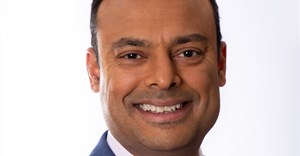Subscribe & Follow
Trending

 Woolworths sees over 20% drop in annual earningsAby Jose Koilparambil
Woolworths sees over 20% drop in annual earningsAby Jose Koilparambil



Jobs
- Documentation Specialist George
- Communications Manager George
- Motor Insurance Claims Consultant George
- Pet Insurance Claims Consultant - Vet Nurse George
- Business Insurance Representative George
- Sales and Service Consultants George
- Administrator George
- Key Account Manager Cape Town
- Key Account Manager Cape Town
- Insurance Sales Agent Nelspruit
Engineering the risk

Bespoke contracts
In outlining the types of risks associated with large engineering projects, initially the contract is the starting point and contains the contractual responsibility as well as details of any proposed insurance programme. Details of these are bespoke to the contract, and rarely is there an off-the-shelf insurance solution to complex engineering projects.
These projects are often firmly in the public view, and therefore face scrutiny on many levels. It is pivotal that each project undergoes a risk analysis and insurance advisors, in conjunction with the contracting parties, will determine the level of coverage suitable to a specific contract.
Different project, different risk
The risks involved differ according to the different types of projects. For instance, oil platforms are technically difficult, but they typically face few institutional risks because they are often built far from public attention. In addition, they are socially desired because of the high revenues they bring to communities and countries.
Further, hydroelectric-power projects tend to be moderately difficult insofar as engineering is concerned, but very difficult in terms of social acceptability. Another consideration is nuclear-power projects which pose high technical risks but still higher social and institutional risks. Lastly, road and tunnel systems present very high levels of risk as rock formations usually hide surprises.
ERM framework
These projects and the insurance risk run parallel to each other and a failure to address these can have far reaching consequences for the project. An enterprise risk management (ERM) framework is often developed by the contracting parties for the particular project. Major risks are highlighted and, where applicable, managed through the framework which might entail the use of a risk management insurance tool.
Market risks
Coupled with the fact that market risks faced by roads, bridges and tunnels are very high when they are built by private sponsors under concessionary schemes; urban transport projects that meet real needs pose average market, social, and institutional risks. However, they still pose technical risks, as they regularly involve underground geological work. Research and development projects present scientific challenges but face fewer social acceptability and market difficulties as they can be broken into smaller testable investments.
The key to success, however, lies in supporting projects with dispute avoidance or resolution, risk management consultancy and auditing services throughout various stages of the construction project lifespan. Using the contract as the basis on which the parties enter into an agreement, once this document is signed the mechanism for addressing the risks and responsibilities is formalised.








